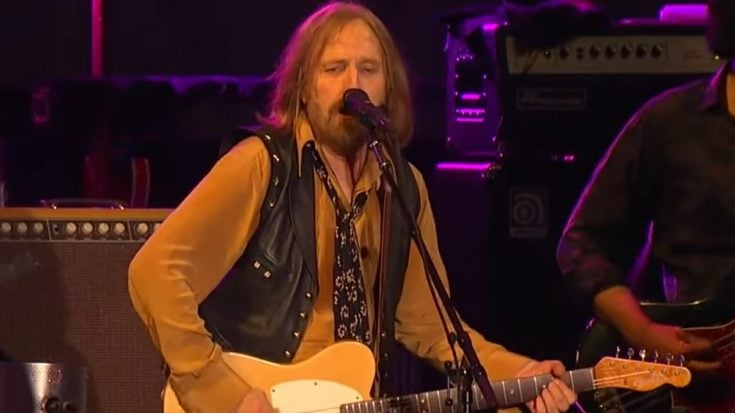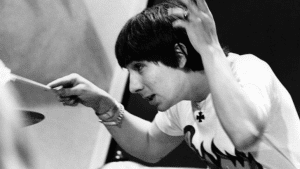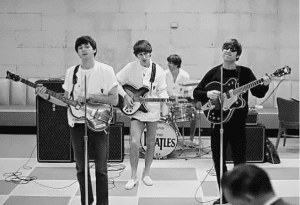The 3 Most Influential Guitarist In Tom Petty’s Career

Tom Petty and The Heartbreakers live in 2014 - Tom Petty / Youtube
The significance of the rhythm guitarist often takes a back seat in the realm of rock and roll. While there is a widespread desire for guitarists who can effortlessly churn out intricate and electrifying solos for extended periods, the unique power of a skilled rhythm guitarist is indispensable in infusing a band with vitality during live performances.
Despite the allure of flashy guitar solos, it is the rhythmic foundation laid down by a proficient rhythm guitarist that propels a band into a dynamic and engaging stage presence.
Renowned for his ability to establish a compelling pulse in each of his songs, Tom Petty acknowledged the debt he owed to the unsung heroes of rhythm guitar that paved the way before him.
Petty’s artistry, while characterized by his distinct vocal and songwriting talents, was profoundly shaped by the contributions of those rhythm guitarists who, with precision and skill, provided the essential backbone to his musical creations.
The timeless magic of Petty’s work
Despite Tom Petty’s remarkable sense of rhythm, not all of his musical endeavors were strictly bound to maintaining a precise tempo.
Upon closer examination of some of his band’s most exceptional works, one notices a deliberate ebb and flow, with the pace gradually accelerating and decelerating in tandem with the song’s heartbeat.
In an era where many contemporary artists might opt to rectify such nuances through modern technology, the allure of Petty’s early records lies precisely in their departure from rigid adherence to a metronomic grid. Whether he adhered strictly to the beat or allowed for rhythmic variations, each of Petty’s songs exudes a subtle heartbeat that can be attributed to his consistent and nuanced approach to performance.
Regardless of the fluctuations in tempo, there is a timeless magic in the way Petty crafted his music, infusing every song with a distinctive pulse that transcends the constraints of a mechanical rhythm.
His love for John Lennon’s guitar skills
Examining the preeminent rhythm guitarists who preceded him, Petty gleaned valuable lessons from the icons of the British Invasion, with John Lennon at the forefront.
Witnessing The Beatles’ electrifying performance on The Ed Sullivan Show was the catalyst that fueled Petty’s aspiration to become a musician. However, it was Lennon’s distinctive approach to both songwriting and guitar playing that captivated Petty’s attention.
The rhythmic foundation evident in Lennon’s style would go on to influence every early Beatles composition. This signature pulse permeated their tracks, prompting the band to surge dynamically in certain moments, as exemplified in the energetic fervor of “Twist and Shout”, and to gracefully transition to more subdued passages, as seen in the tender tones of “And I Love Her”.
Petty recognized the nuanced interplay of rhythm and emotion in Lennon’s work, imprinting upon him the importance of not only musical proficiency but also the artistry in shaping a song’s pulse and atmosphere.
The Rolling Stones’ Brian Jones and Keith Richards
As The Heartbreakers dived deep into the realm of blues-infused rock and roll, the influence of Brian Jones and Keith Richards loomed large during the formative collaboration between Tom Petty and Mike Campbell.
Functioning as complementary counterparts, both Jones and Richards cultivated a unique musical language during their shared tenure, skillfully transforming straightforward blues riffs into elaborate rock and roll symphonies on tracks such as “Satisfaction” and “Jumpin’ Jack Flash”.
While Richards often garners acclaim as the guitar virtuoso within the band, Jones proved to be equally formidable, endowed with a distinctive sense of rhythm that played a pivotal role in maintaining the band’s equilibrium during live performances.
In their collaborative efforts, Jones and Richards not only shaped the sonic landscape of their era but also inspired the artistic trajectory of musicians like Petty and Campbell as they embarked on their own musical journey.
“I stick really closely to the groove with the instrument”
Foremost in Petty’s musical ethos was the recognition of the profound impact a steadfast rhythmic foundation wielded within a band.
Having previously anchored the group Mudcrutch as a bassist, Petty deemed it indispensable to possess a robust technique that could animate the band, transforming it into a dynamic, living entity during performances.
In an interview with Vintage Guitar, Petty emphasized the pivotal role of the rhythm guitar in shaping the soul of the band.
He articulated, “I really concentrated on being… I guess, because I’d been a bass player, I wanted to play rhythm in a real solid way. So our music is really based on that rhythm guitar, and everything else grows from there. If I’m showing the band a new song, it’s based on rhythm guitar, and they fill in around that. But I stick really closely to the groove with the instrument”.
https://twitter.com/dvrkofthesun/status/1727730494765203670
The genius behind Tom Petty’s songwriting
While Tom Petty’s musical style may be perceived as relatively uncomplicated by some, what distinguishes him from conventional strumming guitar virtuosos is his remarkable skill in anchoring the band firmly to the ground, especially in the expansive settings of stadiums.
His artistry transcends the need for elaborate embellishments, emphasizing a purity that connects directly with the essence of a good song. Petty’s genius lies in the ability to craft compositions that resonate profoundly, even when stripped down to a solitary guitar, affirming the inherent strength of his songwriting.
In the vast expanse of a stadium, where the acoustics challenge many to maintain a genuine connection with the audience, Petty’s music stands out as a testament to the potency of simplicity. It’s not about flashy fretwork or intricate techniques but about the profound impact that a well-constructed song, rendered with authenticity, can have on the listener.
The absence of superfluous adornments allows the core emotions and melodies to shine through, proving that a great song, in the hands of a master like Petty, possesses an enduring quality that transcends the need for extravagant instrumentation.













